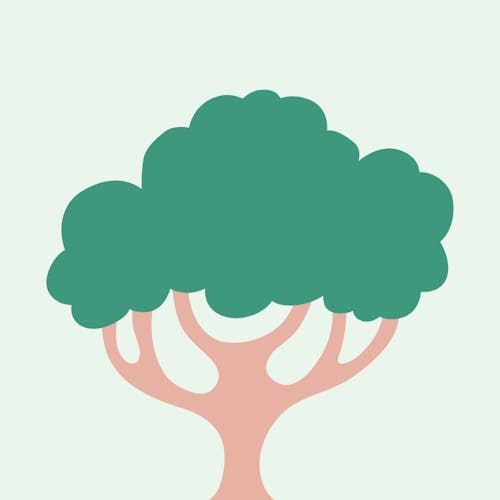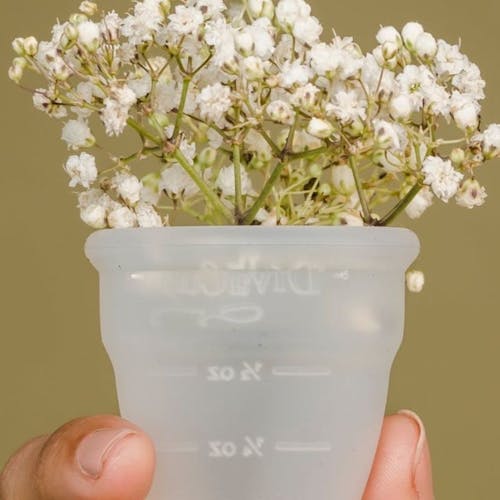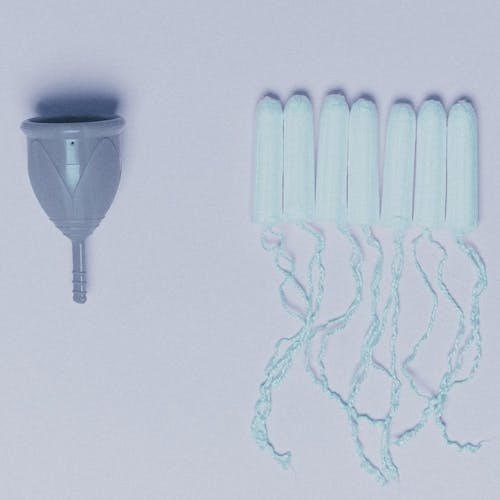This website uses cookies to enhance the user experience. By using Yoppie you are agreeing to our use of cookies.
Stop Flushing Your Period Products!
Written by Yoppie
16 Apr 2021
Why not to flush
What happens when you flush
What should go down there
How to dispose of period products properly
If you’re caught in a pickle...
You’ve just changed your tampon/pad/liner, and you need to get rid of the used one… do you:
- Wrap it in loo roll and shove it in the bin?
- Stick it in an envelope and send it to your enemies?
- Flush it down the toilet?
As much as it might amuse you to stick a first class stamp on that bio-waste, the truth is there’s really only one right answer here, and we’re about to tell you why…
Why not to flush
The average person spends around 2,280 days on their period and uses 11,000+ tampons or pads in their lifetime. Around the world an estimated 100+ billion menstrual hygiene products are disposed of each year, many made using plastic and other non-biodegradable materials, meaning they take 500-800 years to decompose - a landfill nightmare.
But disposable period products can go on to pollute waterways and harm marine wildlife too. In fact, in a single day in 2015, the non-profit Trash Free Seas program at Ocean Conservancy collected 27,938 used tampons and applicators on beaches around the world. Why? Because too many people still think it’s OK to flush their used menstrual products, even applicators, down the toilet - whether due to lack of knowledge, or lack of caring.
One study into public awareness of the ‘environmental impact of menstrual products and product choice’ found that education and awareness around this topic could and should be improved, whether through school curriculums, public awareness campaigns, better labelling on products, and changes in legislation to create forced action.
In an eye-opening survey, almost half of UK people who menstruate say they flush tampons down the loo, and the Journal of the Institution of Environmental Sciences found that around 2.5 million tampons, 1.4 million sanitary napkins and 700,000 liners are flushed every day.
What happens when you flush
To put it bluntly, they clog sewer pipes, causing untreated wastewater to overflow and end up in rivers and other waterways. Many people don’t consider that period products are designed to be absorbent, which means when they’re flushed, they grow larger and get stuck in the plumbing pipes, causing serious blockages.
But if you’re thinking “that’s not my problem, when I flush them they just disappear…” you could be building up to some pretty gross sewage backflow into your home, and costly repairs. Not only this, it can clog the waste systems in your local area, leading to sewage backflow to nearby streets.
We can’t say it better than Lanes for Drains, who tackled the infamous Whitechapel fatberg in 2017, and say on their website; “Underneath our feet, a war is being waged between our ailing Victorian-era sewers and a torrent of sanitary products clogging up our pipes, drains and water courseways.” Dramatic, sure. But they really hit the nail on the head - our sewage systems are NOT designed for sanitary products.
What should go down there
Good question. A great rule to live by is; never flush anything that isn’t one of the three Ps - paper, poop or pee! To be more specific, you should only be flushing human waste, and the only non-human waste that can be flushed is toilet paper. That’s because loo roll is manufactured to break down almost immediately after being flushed.
No other products are created this way, so you should never flush things like makeup, cleaning or baby wipes (even if they’re labelled ‘flushable’ - they’re not!), paper towels, dental floss, nappies, cotton buds, condoms, and of course, your pads and ‘pons.
How to dispose of period products properly
If you’re not up for switching to reusable pads or a cup, and disposable menstrual products are just your jam, then the best thing you can do is look for organic, biodegradable products. This means they’re made from cotton that has not been treated with pesticides and other toxic chemicals. Organic cotton is the best material for the quickest break-down.
When you go to the loo, wrap used products in some toilet roll and put them in the bin - having a small bathroom bin is handy, but you can take it out to the kitchen bin too, or pop it in the dedicated sanitary disposal bins when you’re out and about.
If you’re caught in a pickle...
We get it - in some situations flushing seems easier. In most establishments there should be a sanitary bin to dispose of used menstrual products, but we’ve all found ourselves in unlikely situations over the years when a bin is not available. Example: you’re visiting Grandma. There’s no bin in the bathroom. You discreetly wrap your used tampon in loo roll, do a Tom Cruise-style mission to dispose of the evidence and hope she doesn’t notice!
These situations can be embarrassing, but the alternative - flushing used products - is not only terrible for the environment, but could result in ever further embarrassment if it blocks the toilet. Best to avoid this altogether, and instead, bin it or pop it in a dedicated pouch that you carry with you (like this one, or this one, or this odour-proof one) and take it home to dispose of in your own bin.
Got a question about switching from flushing to binning? Shout out in our private Facebook group or drop us a note on Insta @itsyoppie. Don't forget that our personalised period box can get organic tampons, PMS supplements and more delivered easily and regularly through your letterbox with eco-friendliness built in, so you know you aren't adding to that big ol' landfill problem with your time of the month.
Section jump
Back to top
Subscribe To Our Newsletter
YOPPIE





© 2025 Yoppie is a registered trademark of Phlo Technologies Ltd.
Yoppie's supplements are not a substitute for a varied diet and healthy lifestyle and are not intended to diagnose, treat, or cure any disease. If you are pregnant, breastfeeding, have a medical condition or are under medical supervision, please consult with your doctor before taking any of our products.






